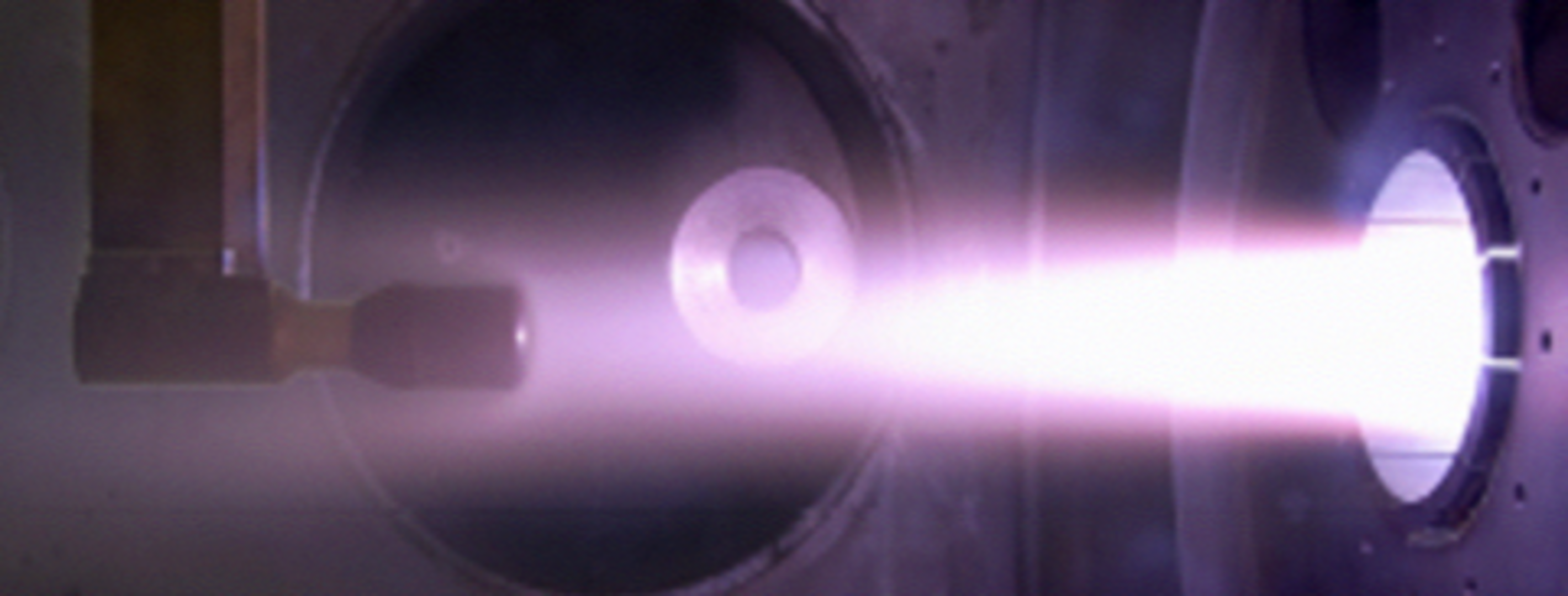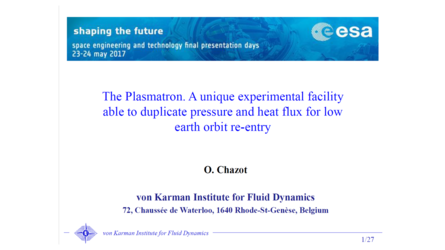Enhancement of VKI Plasmatron Operational Capabilities
| Programme: | GSTP | Achieved TRL: | 9 |
| Reference: | G514-005MP | Closure: | 2016 |
| Contractor(s): | Von Karman Institute (BE) | ||
Planetary entries still remain a major challenge for aerospace engineers and aerothermodynamics testing is essential for the development and design of aerospace vehicles. In such situation dedicated ground testing capabilities appear as a strong requirement for TPS design. Number one they represent a first convenient step in the testing procedure at reduce cost to support at best the launch of a mission. Number two the ground tests allow a better control of the environment and the measurement techniques to investigate TPS properties and give a strong basis for aerospace mission development.
Objectives
Extend and consolidate the testing capabilities of the VKI Plasma Wind Tunnel (Plasmatron facility) for the characterization of Gas-Surface-Interaction phenomena on TPS. Catalysis, Passive-Active Oxidation and ablation for stagnation point and off stagnation point in subsonic and supersonic regime.

Achievements and status
The project was an opportunity to update the hardware and the software for the control system of the facility. Thanks to the modifications the TPS testing process has been consolidated and has gained a lot in efficiency for the current testing operations. The operating envelope of the VKI Plasmatron facility has been widely extended to reach the level of the heat-flux requested by ESA adapted for the future space exploration missions. The testing conditions have been characterized and analyzed in details for subsonic and supersonic regime. Experimental measurements and CFD tools were also combined with Monte-Carlo methods to carry out Uncertainty Quantification studies on the enthalpy determination and the Gas-Surface Interaction characterization.
Benefits
This enlarged framework allows for the accurate testing of re-usable TPS and ablative material in their specific flight situation. The testing methodology has been also applied for off-stagnation testing to be tailored to lifting body reentry. Application to IXV pre-flight ADT database and CATE flight experiment were successfully carried out.
Next steps
The VKI Plasmatron facility with all its dedicated testing methodologies and instrumentation will be used, in the coming years, to characterize space debris demisability in Clean Space framework.





